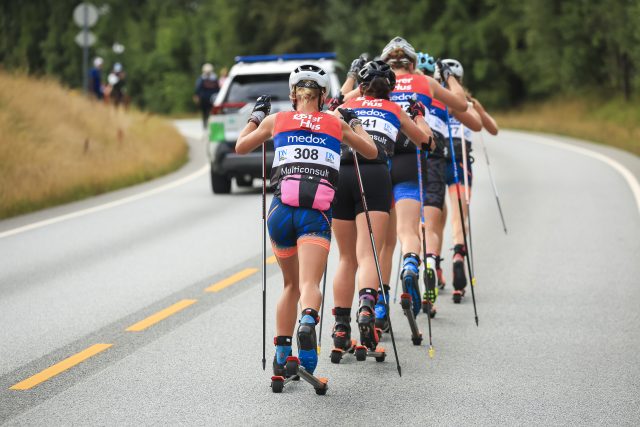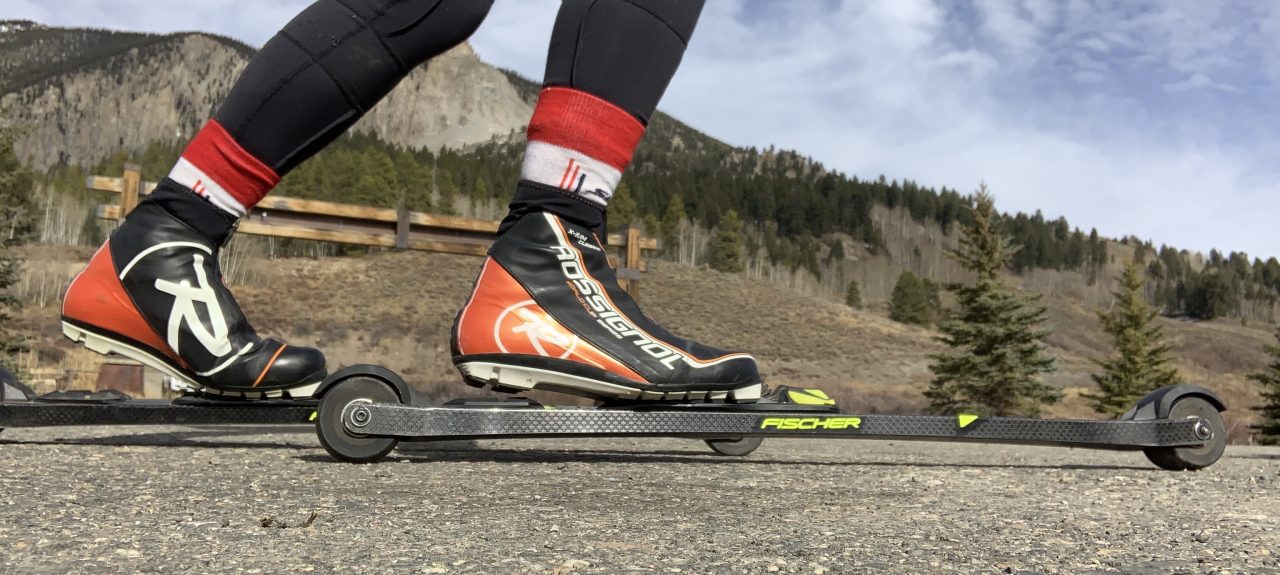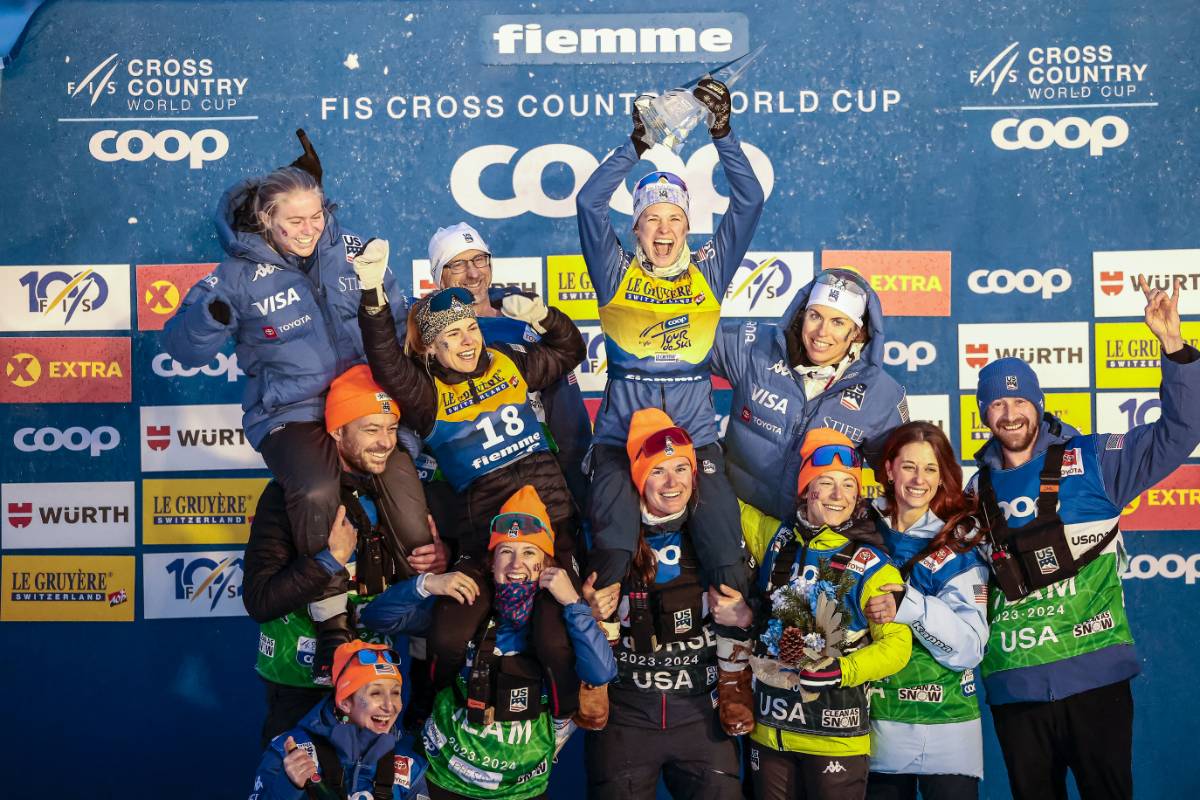
For decades, my summers were filled with roller skiing. First as a junior, then as a collegiate racer, followed by nearly 15 years as a coach: summers meant endless hours logged on New England roads on roller-skis. In recent years, I’ve shied away from the unique click and clack of pole tips on asphalt in favor of running, cycling, swimming and paddling. But this summer—with cooler autumn days approaching—I find my body longing for some hard work double-poling on the mountain roads above my New England town. Time to break out the roller skis . . .
The renewal of my summer-season tradition has me thinking: when I’m out roller skiing, nearly every car that passes me is filled with faces displaying quizzical wonder and confused misunderstanding. What is that guy doing? How does it work? Isn’t that extraordinarily dangerous? Why not just wait for snow? While I might not have all the answers to all the questions, I CAN offer some explanation to those skiers who might be new to roller-skiing. I want cross-country skiing to grow and for newcomers to feel welcome…to feel like they can ask any question even if it seems basic. Like, what the heck is roller-skiing?
Roller-skiing is a sport and training activity that simulates the motion of cross-country skiing on snow using specialized skis with wheels. It was developed as a way for cross-country skiers to continue their training during the warmer months when snow is not available. The activity closely replicates the movements and techniques of cross-country skiing, providing a way for athletes to maintain their ski-specific fitness and technique year-round.

Roller-skis are designed with two wheels on each ski, allowing the skier to push off the ground and glide forward. There are two main types of roller-skis:
Classic Roller-Skis are designed to mimic classic cross-country skiing techniques, where the skier uses a diagonal stride (one wheel on each classic roller ski is ratcheted—rolling freely forward, but not backward—thereby enabling the skier to “kick” like on a kick-waxed classic ski). Classic roller ski wheels are broad and low-profiled, designs that offer the sort of lateral stability that the width of the ski provides on snow.
Skate Roller-Skis are designed to simulate the skating technique used in cross-country skiing. Skiers use a side-to-side motion to propel themselves forward somewhat similar to ice skating. Skate roller ski wheels are taller and narrower, allowing the ski to angle or “edge” the way a ski does during the skating motion.
Roller-skiing can be done on various surfaces: paved roads, bike paths, or other smooth, flat terrains. Skiers most often use ski poles with special ferrules (tips) made from hardened carbide steel for durability. These carbide tips really are a game-changer for first-time roller skiers, reducing the amount of slipping that will otherwise occur with the normal tips found on our usual winter ski poles.
This sport is not only used for training by cross-country skiers, but has also developed into a competitive sport of its own with roller-skiing races held in some regions and countries. The Blink Festival, which took place last weekend in Norway is an annual roller-ski festival held in the region of Sandnes and Stavanger. It attracts many of the world’s best professional cross-country skiers and biathletes from around the world so they can showcase their skills and compete in various roller skiing disciplines such as sprint, mass start, and individual time trials. The festival typically features competitions for both elite athletes and amateur participants, allowing enthusiasts of all levels to engage in the sport. Spectators can also enjoy watching the races and witnessing top athletes in action.
Roller-skiing requires good balance, strength, and coordination, making it an excellent off-season training activity for cross-country skiers and a challenging recreational sport for others. As with any outdoor activity, it is essential to wear appropriate safety gear like helmets, gloves and a hi-vis shirt if you will be on roads with cars. Beginners should consider additional knee and elbow pads until they get comfortable on their roller-skis. And, yes, mechanical braking systems are available (you won’t see them used by proficient skiers very often, but braking systems can definitely increase confidence for beginners). Finally, safety on the road should be your primary concern. Always follow traffic rules when roller-skiing on public roads or paths, and be sure to scout road conditions and downhills before beginning your workout; you never know when a rain shower or construction disturbance has deposited gravel across a road. And any downhill that makes you uncomfortable is a downhill that should be walked rather than skied. When in doubt, take off the skis, walk to the bottom, and continue your workout with no bumps or scrapes!
Whether you’re an experienced racer or newcomer to the sport, I look forward to seeing you out rolling skiing this summer and fall.
FasterSkier relies on the generous support of our industry partners, so if you are interested in learning more or want to purchase your own roller-skis please consider supporting those companies who support us:

Editor’s note: the author of this post—Matt Voisin—is also the Publisher and Owner of fasterskier.com. His is the vision and the effort that brings us this content, this news, and this message on a daily basis.




